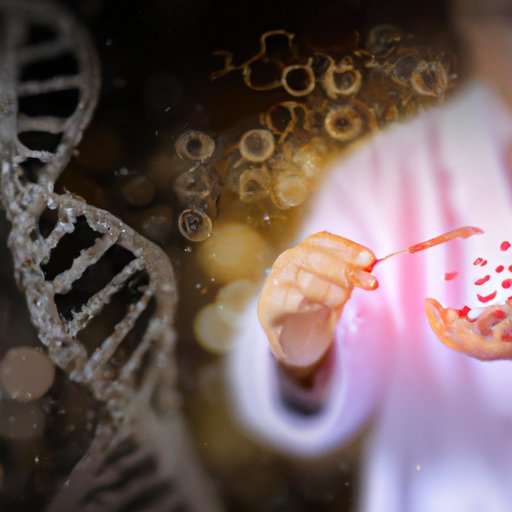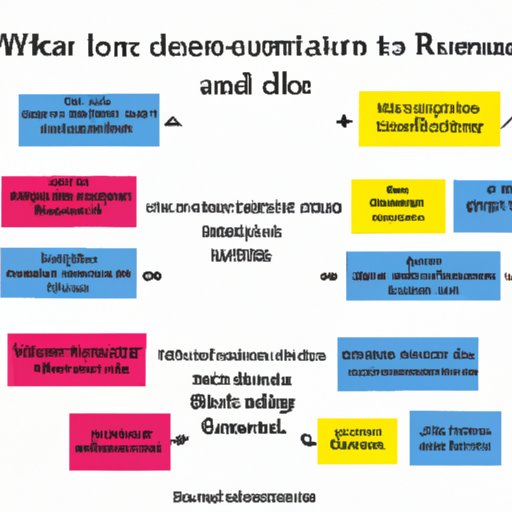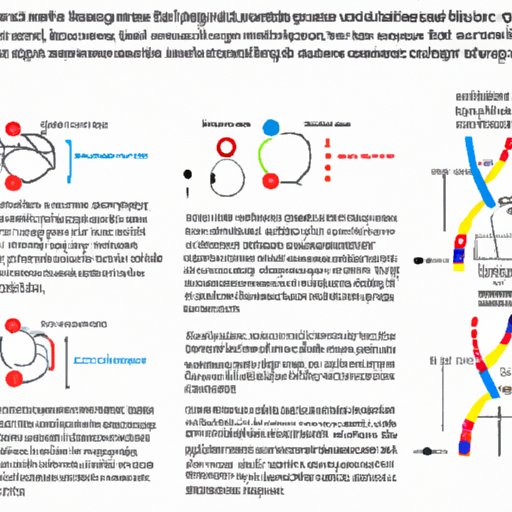Introduction
Recombinant DNA technology is a rapidly advancing field in which genetic material from different sources is combined to create new forms of life. This technology has been used to develop new medicines, treatments, and even entire organisms with specific characteristics. In this article, we will explore the basics of recombinant DNA technology, its impact on medicine and science, and the various ethical considerations associated with its use.

Exploring the Basics of Recombinant DNA Technology
Before delving into the specifics of recombinant DNA technology, it is important to understand what it is and how it works. Recombinant DNA is created when genetic material from two or more sources is combined to create a new form of life. This process involves taking a gene from one organism and inserting it into another, resulting in the formation of a hybrid organism that carries traits from both parents. For example, scientists have used recombinant DNA technology to create bacteria that can produce human insulin, which is used to treat diabetes.
The process of recombinant DNA technology involves several steps. First, the desired gene must be isolated from its original source. This is usually accomplished through the use of enzymes that cut the DNA at specific points. Once the gene has been isolated, it must be inserted into the host organism. This is typically done using a vector, such as a plasmid, which is a small circular piece of DNA. The vector is then inserted into the host organism, where it will integrate the foreign gene into its own genome.

The Impact of Recombinant DNA Technology on Medicine and Science
Recombinant DNA technology has had a profound impact on medicine and science. It has allowed for the development of new treatments and therapies, as well as the production of drugs and vaccines. For example, recombinant DNA technology has been used to develop a vaccine for hepatitis B, which has been shown to be effective in preventing the disease.
In addition to its medical applications, recombinant DNA technology has also been used to create new organisms with specific characteristics. For instance, scientists have used recombinant DNA technology to create plants that are resistant to certain pests and diseases, as well as animals with improved growth, milk production, and other desirable traits.
While recombinant DNA technology has many potential benefits, there are also some challenges associated with its use. One major concern is the potential for the creation of new viruses and other pathogens that could be dangerous to humans or other species. Additionally, some worry about the potential for the misuse of recombinant DNA technology, such as the creation of “designer” organisms with enhanced abilities.
A Comprehensive Guide to Understanding Recombinant DNA Technology
In order to fully understand the potential applications and benefits of recombinant DNA technology, it is important to understand the various types of recombinant DNA technology and how it is used in research. There are three main types of recombinant DNA technology: cloning, transgenesis, and gene therapy.
Cloning involves the production of genetically identical copies of an organism. This process is used to produce organisms with desirable characteristics, such as disease resistance, increased yield, or improved flavor. Transgenesis involves the insertion of genes from one species into another. This process is often used to create organisms with improved traits or to produce proteins or other molecules.
Gene therapy is the most complex type of recombinant DNA technology. It involves the introduction of a gene into a patient’s cells in order to correct a genetic defect or otherwise alter their genetic makeup. This type of therapy has been used to treat a variety of conditions, including cancer, cystic fibrosis, and sickle cell anemia.

Exploring the Pros and Cons of Recombinant DNA Technology
As with any technology, there are both advantages and disadvantages associated with recombinant DNA technology. On the positive side, recombinant DNA technology has the potential to provide a wide range of medical and scientific benefits. It can be used to develop cures for diseases, create new treatments, and improve the quality of life for people around the world.
On the other hand, there are some potential drawbacks to the use of recombinant DNA technology. These include the potential for unforeseen consequences, the possibility of creating new pathogens, and the ethical implications of manipulating the genetic code of living organisms.

An Overview of How Recombinant DNA Technology is Used in Research
Recombinant DNA technology is used in a variety of research settings. It can be used to develop new treatments and therapies, as well as to create new organisms with specific traits. It is also used in the production of drugs and vaccines, as well as in the study of genetics and evolutionary biology.
In addition, recombinant DNA technology is used in biotechnology, which is the application of biological processes to solve problems or create products. Examples of biotechnological applications include the production of biofuels, food products, and pharmaceuticals.
Examining the Ethical Implications of Recombinant DNA Technology
The ethical implications of recombinant DNA technology cannot be overlooked. Some argue that manipulating the genetic code of living organisms could have unintended consequences, while others believe that the potential benefits outweigh the risks. There are also concerns about the potential for the misuse of this technology, such as the creation of “designer” organisms or the manipulation of human embryos.
In order to address these issues, it is important to consider the ethical implications of recombinant DNA technology before it is used. This includes understanding the potential benefits and risks, as well as the legal and regulatory framework that governs its use. Additionally, it is important to ensure that appropriate safety protocols are in place to protect human health and the environment.
Investigating the Potential Applications and Benefits of Recombinant DNA Technology
Despite the ethical concerns surrounding its use, recombinant DNA technology has the potential to provide a wide range of benefits. It can be used to develop new treatments and therapies, as well as to create new organisms with specific characteristics. It can also be used to produce drugs and vaccines, as well as to study genetics and evolutionary biology.
Additionally, recombinant DNA technology has the potential to revolutionize the food industry. It can be used to create crops with improved yields and nutritional value, as well as to reduce the need for pesticides and other chemicals. Finally, it can be used to produce biofuels and other renewable energy sources.
Conclusion
Recombinant DNA technology is a rapidly advancing field that has the potential to provide a wide range of benefits. It can be used to develop new treatments and therapies, as well as to create new organisms with specific characteristics. However, it is important to consider the ethical implications of this technology before it is used, as there are potential risks and dangers associated with its use.
Overall, recombinant DNA technology is an incredibly powerful and versatile tool that has the potential to revolutionize medicine and science. With careful consideration of the ethical implications, this technology has the potential to benefit humanity in a variety of ways.
(Note: Is this article not meeting your expectations? Do you have knowledge or insights to share? Unlock new opportunities and expand your reach by joining our authors team. Click Registration to join us and share your expertise with our readers.)
